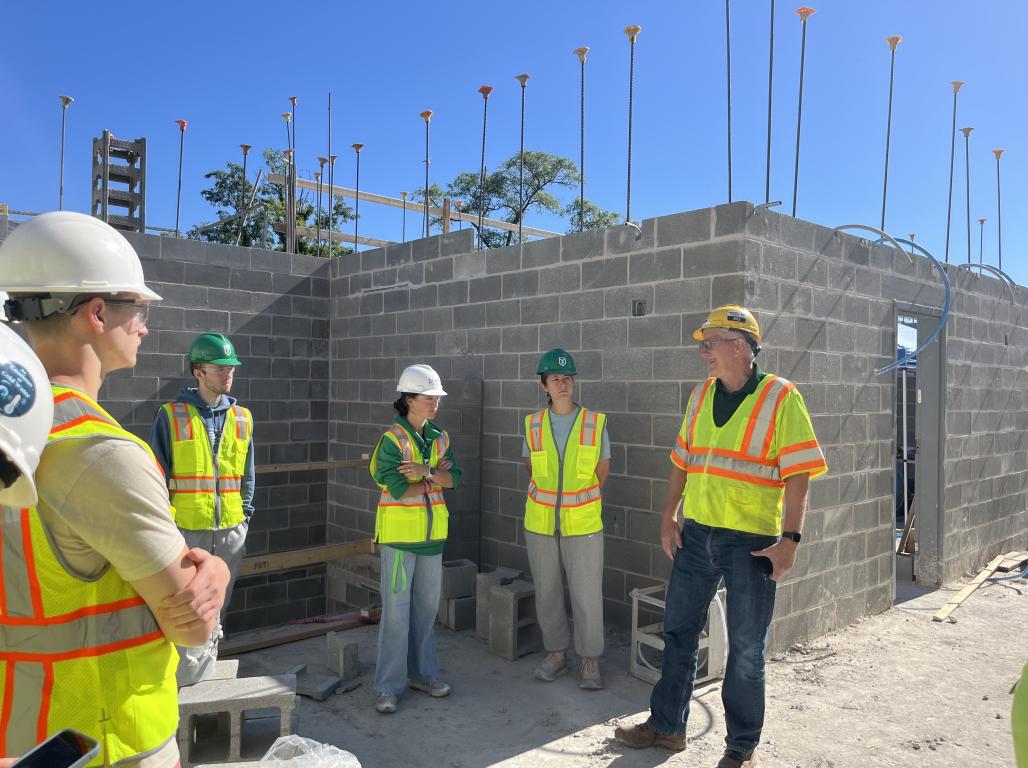
- Academics
- Graham School of Business
- Spotlights
- Andrew Shumway
York College Instructor Studies How AR and VR Help Businesses Connect with Customers
In a village along a mountainside in Peru, a little boy named Julio points to the mattress in the tiny home where he sleeps with his mother and sisters. Every day, Julio wakes up and walks several miles down the mountain to school. His story is like one of many children who live in his village. And within four minutes, viewers step away feeling like they know him.
Julio’s story was shared in a series called Within, a virtual reality documentary shot by Toms, the social venture known for donating a pair of shoes for each pair that is purchased. The Virtual Giving Trips that Toms produced illustrate how brands are using augmented and virtual realities (AR and VR), to tell stories and connect with an audience.
“This is a way to use VR as an empathy machine,” says Andrew Shumway, an instructor of Public Relations and Integrated Marketing Communications at York College of Pennsylvania. “Now, you can be part of an experience you wouldn’t have otherwise had an opportunity to have. It gives nonprofits a unique way to market what they do.”
Shumway has been studying the advancements of AR and VR in marketing. His research has taken him to not only explore how companies like Toms use technology to bring viewers into a closer experience with their mission, but how marketing students can latch onto the growing trend of storytelling to connect a brand with a customer.
Why stories matter
Producing video can be expensive, and it’s challenging for a lot of small to mid-size businesses to produce the high-quality content that larger companies are distributing. Many of the public relations firms in New York, Philadelphia, and Baltimore charge tens of thousands of dollars for a short production using equipment that can be just as expensive.
“I'm encouraging students to examine how emerging technology can shape experiences,” Shumway says. “What we are seeing is a growing desire from consumers to engage with storytelling, and I want students to explore the best ways to tell those stories.”
National Geographic also has jumped on the VR technology bandwagon to produce a series following Iraq war veterans called The Long Road Home. It raises the question of how veteran service organizations could use similar technology or storytelling concepts to solicit donations.
“There’s an immersive experience that video technology provides,” Shumway says. “Not a lot of other things can give someone the same feeling of being there in the moment. But it’s not just the technology that makes these pieces powerful. It’s a team of storytellers connecting to our emotions.”
Storytelling and technology
AR and VR have a lot of practical applications for companies. Many people use AR when they want to “see” how a couch may look in their living room before buying it. Others try on hairstyles or sit behind the wheel of a car. Real estate agents even use the technology to help someone tour a home.
That type of content tends to be simple, Shumway says. Storytelling requires someone to edit, to ask the right questions, to develop a narrative, and to draw the audience into the fold of what’s happening. While it requires a lot more work, storytelling can also lead to loyalty that brands are finding more valuable.
“Research shows us that on the high production end of VR, there is longer engagement, a deeper emotional connection, and increased trust,” he says. “What we have to wait and see is if it lives beyond the fad and creates long-term results for businesses.”



